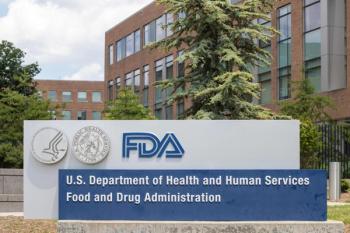Precision medicine is reshaping cancer care by enabling personalized therapies based on genomic and molecular profiling. In contrast to traditional approaches that rely on tumor histology, precision oncology aims to maximize therapeutic efficacy and minimize toxicity through individualized treatment strategies.1 Within this paradigm, precision medicine oncology pharmacists have emerged as key members of the multidisciplinary care team. These professionals contribute to selecting and optimizing targeted therapies, navigating complex access pathways, educating patients, and monitoring for adverse effects (AEs)—all of which support improved clinical outcomes.2
Ali et al previously highlighted the emerging role of pharmacists in novel drug combinations and precision medicine.3 This article builds on that foundation by highlighting the work of clinical precision medicine oncology pharmacists in a large tertiary academic medical center’s Rare Cancer and Precision Medicine Clinic.
Targeted Therapy Matching and Molecular Tumor Boards
A core of precision oncology is the identification of actionable genomic or molecular alterations and developing an individualized, matched, targeted treatment plan for each patient. Molecular tumor boards (MTBs) convene to support this effort and include pharmacists, physicians, advanced practice providers, nurses, genetic counselors, and scientists. These interdisciplinary teams examine genetic sequencing and other molecular profiling to recommend targeted treatments and potential novel drug combinations.4
Pharmacists contribute to MTBs by analyzing reports from next-generation sequencing and other molecular testing and assisting in matching detected alterations with guideline-recommended therapies, novel drug combinations, or clinical trials.
Pharmacists assess the appropriateness of targeted agents based on factors such as drug metabolism, potential resistance mechanisms, coexisting comorbidities, and/or drug interactions. Within the Rare Cancer and Precision Medicine Clinic, most guideline-recommended standard-of-care options have already been exhausted upon patient presentation, as these therapies are typically managed by the primary referring oncologist. This leaves most patients being evaluated for novel drug combinations or clinical trials.
When assessing novel drug combinations, the pharmacist is a critical team member in evaluating potential overlapping toxicities that may arise. Safe dosing and toxicity of select combinations have been reported, but much of the toxicity profile of novel drug combinations remains undefined within the current literature.5-9 With the lack of robust data evaluating toxicities in novel drug combinations, it is the responsibility of the pharmacist to lead discussions regarding potential toxicities and recommend appropriate monitoring. This unique role utilizes pharmacists’ pharmacologic expertise and clinical practice experience in monitoring and treating medication toxicities. With novel combinations, the pharmacist’s role is to evaluate drug-drug interactions to ensure that the new anticancer medications and preexisting medications do not have interactions that could potentially lead to increased toxicity or reduced efficacy.
The precision medicine oncology pharmacist additionally serves as the comoderator of new FDA drug approvals for the MTB. When a new targeted treatment receives FDA approval, the pharmacist presents critical information regarding the drug target/biomarker, efficacy results from landmark trials, and key safety and monitoring information. Within these presentations, the pharmacist informs the MTB of any anticipated barriers to access or reimbursement for the newly approved drug. These presentations are essential to ensure that all members of the MTB are informed of recent FDA approvals and the availability of new treatment options.
Addressing Medication Access Barriers
Even as precision oncology promises to reshape the future, patient access to matched targeted therapy remains a significant barrier to implementation. Exorbitant drug prices, insurance restrictions, complex reimbursement policies, and restrictive manufacturer patient assistance programs often stand in the way of rapid initiation of targeted therapy. However, many patients seeking these novel therapies have aggressive cancers that are not conducive to waiting months for treatment. The precision medicine oncology pharmacist plays a leading role in overcoming these financial barriers by facilitating prior authorizations (PAs) and appeals, authoring letters of medical necessity, and supporting patient access to financial assistance programs.
PAs and appeals are frequently required for oncology-targeted medications to ensure insurance coverage. The pharmacist and a team of specialized medication access pharmacy technicians streamline this process by assisting in the preparation of comprehensive PA requests. PAs are almost always initially denied for novel drug combinations. When a PA claim is denied, the pharmacist and technicians assist providers in submitting insurance appeals, including clinical justification and drafting of letters of medical necessity with supporting documentation from genomic reports and published literature. When the appeal is denied due to insurance restrictions on off-label use of targeted agents, patient assistance programs (PAPs) are pursued as the last option for medication access. Manufacturers offer a variety of programs to help patients overcome access barriers, including co-pay assistance programs and PAPs that provide free medication through foundation support. The pharmacist identifies available manufacturer programs, assists the patient with application completion, and communicates with field reimbursement managers to overcome barriers to providing access to novel drug combinations. The medication access technicians, in collaboration with the pharmacist, also advise patients on PAP renewal and eligibility criteria to ensure continuation of therapy.
Drug repositories and compassionate use programs are another unique route available for medication access. Some states have drug repository programs that allow patients to access donated drugs at a reduced price. The pharmacist promotes donations of factory-sealed unused medications from patients who have progressed on current therapy to the facility repository. Donations to the repository help remove hazardous medications from patients’ homes and allow access to patients waiting on lengthy insurance delays or encountering other unique barriers to medication access. Furthermore, when no other targeted therapy is available or accessible, the pharmacist collaborates with the multidisciplinary team to facilitate compassionate use programs to make investigational medication available through expanded access processes.
Oral Anticancer Medication Patient Education
Before initiation of any new oral anticancer medication (OAM), the pharmacist meets with the patient to conduct a comprehensive medication history. The patient’s list of current medications is reviewed for potential drug interactions with the new OAM. If a potential interaction is identified, the pharmacist is responsible for recommending avoidance or mitigation strategies. These strategies include but are not limited to changing supportive care medications to a similar agent that does not interact, adjusting doses, or recommending specific administration instructions.
After ensuring that the patient is safe to initiate therapy, the pharmacist proceeds to educate the patient about what to anticipate with the new OAM. Generally, it is preferable to meet with the patient in person to ensure full comprehension, but phone teaching appointments are completed when in-person is not logistically feasible. The pharmacist and patient review medication dosing and administration, safe handling of medication and bodily fluids, notable food and drug interactions, particular storage considerations, and significant AEs to be monitored for, as well as how these AEs can be minimized and managed. Take-home teaching documents are provided to patients so that they can have a written copy of all the information discussed.
Monitoring and Toxicity Management
The precision medicine approach to cancer treatment aims to enhance treatment efficacy based on matched targeted therapy and also necessitates diligent monitoring of AEs. Many targeted therapies and immunotherapies have unique toxicity profiles requiring proactive management, and this need for close management is elevated when using novel drug combinations. The precision medicine oncology pharmacist is central in recognizing, preventing, and mitigating treatment-related toxicities.
Targeted oncology agents typically produce anticipated toxicities based on their mechanisms of action and drug class. For example, many tyrosine kinase inhibitors may result in AEs including hepatotoxicity, cardiotoxicity, gastrointestinal toxicity, or dermatologic reactions. The pharmacist employs their pharmacologic knowledge and clinical experience to assess overlapping toxicities within the novel drug combination to ensure that appropriate monitoring is implemented for all patients. The pharmacist completes proactive monitoring and toxicity assessments over the phone between provider appointments and in collaboration with providers at clinic visits.
Identifying AEs early and treating them appropriately is essential, as many AEs may be reversed by supportive care medications and/or dose interruptions or reductions. The pharmacist plays a pivotal role in this process when novel drug combinations are used by assessing the timeline of medication start dates, known toxicities, potential areas of overlap, and specific clinical features of individual drug toxicities. If left untreated, some AEs could be severe and lead to morbidity or mortality.
About the Authors
Justin Grahl, PharmD, is a clinical precision medicine oncology pharmacist in the Department of Pharmacy at Froedtert Hospital in Milwaukee, Wisconsin.
Abigail Beachy, PharmD, is a clinical oncology pharmacist in the Department of Pharmacy at Froedtert Hospital in Milwaukee, Wisconsin.
Islam Elbedewy is a PharmD candidate at Concordia University Wisconsin School of Pharmacy in Mequon, Wisconsin.
Megan Mills, PharmD, is a PGY-2 oncology pharmacy resident in the Department of Pharmacy at Froedtert Hospital in Milwaukee, Wisconsin.
Rachel Schneider, PharmD, is a PGY-2 oncology pharmacy resident in the Department of Pharmacy at Froedtert Hospital in Milwaukee, Wisconsin.
Immunotherapy is a commonly used drug class within novel drug combinations, and select immunotherapies carry tumor-agnostic FDA approvals. Immunotherapy can trigger immune-related adverse events (irAEs), including colitis, pneumonitis, hepatitis, and endocrinopathies, among many others.10 The pharmacist collaborates with the multidisciplinary team to assist with early recognition and appropriate treatment of these potentially severe toxicities.
IrAEs have been well defined in the literature and can range from a mild rash to severe inflammatory disorders, including myocarditis or pneumonitis.10 Prompt and appropriate management of any irAE is paramount to patient recovery. The pharmacist assists in this process by recommending appropriate steroid dosing, ensuring that appropriate supportive care is initiated with high-dose steroids, and discussing potential adjuvant immunosuppression based on national guidelines if patients become steroid refractory.
Conclusion
The precision medicine oncology pharmacist is a critical team member within the Rare Cancer and Precision Medicine Clinic to ensure that patients receive appropriate targeted therapy while overcoming obstacles of medication access and toxicity. With a deep understanding of molecular pharmacology, access and reimbursement principles, and medication AEs, the pharmacist helps to improve patient safety and treatment efficacy. While precision oncology further develops in clinical practice, a growing demand will emerge for the services of precision medicine oncology pharmacists.
REFERENCES
1.Schilsky RL. Personalized medicine in oncology: the future is now. Nat Rev Drug Discov. 2010;9(5):363-366. doi:10.1038/nrd3181
2.Mateo J, Chakravarty D, Dienstmann R, et al. A framework to rank genomic alterations as targets for cancer precision medicine: the ESMO Scale for Clinical Actionability of molecular Targets (ESCAT). Ann Oncol. 2018;29(9):1895-1902. doi:10.1093/annonc/mdy263
3.Ali A, Sta Maria MA,Martinez M, Tinajero J. Novel drug combinations in precision medicine are an emerging landscape for pharmacists. October 10, 2023. Accessed March 14, 2025. https://www.pharmacytimes.com/view/novel-drug-combinations-in-precision-medicine-are-an-emerging-landscape-for-pharmacists
4.Tsimberidou AM, Kahle M, Vo HH, Baysal MA, Johnson A, Meric-Bernstam F. Molecular tumour boards—current and future considerations for precision oncology. Nat Rev Clin Oncol. 2023;20(12):843-863. doi:10.1038/s41571-023-00824-4
5.Liu S, Nikanjam M, Kurzrock R. Dosing de novo combinations of two targeted drugs: towards a customized precision medicine approach to advanced cancers. Oncotarget. 2016;7(10):11310-11320. doi:10.18632/oncotarget.7023
6.Nikanjam M, Patel H, Kurzrock R. Dosing immunotherapy combinations: analysis of 3,526 patients for toxicity and response patterns. Oncoimmunology. 2017;6(8):e1338997. doi:10.1080/2162402X.2017.1338997
7.Nikanjam M, Liu S, Yang J, Kurzrock R. Dosing three-drug combinations that include targeted anti-cancer agents: analysis of 37,763 patients. Oncologist. 2017;22(5):576-584. doi:10.1634/theoncologist.2016-0357
8.Nikanjam M, Tinajero J, McGann M, et al. Dosing of 3 targeted agents in novel drug combinations used at the Precision Medicine Clinic of the University of California San Diego. J Hematol Oncol Pharm. 2023;13(1):19-25.
9.Nikanjam M, Kato S, Sicklick JK, Kurzrock R. At the right dose: personalised (N-of-1) dosing for precision oncology. Eur J Cancer. 2023;194:113359. doi:10.1016/j.ejca.2023.113359
10. Schneider BJ, Naidoo J, Santomasso BD, et al. Management of immune-related adverse events in patients treated with immune checkpoint inhibitor therapy: ASCO Guideline Update. J Clin Oncol. 2021;39(36):4073-4126. doi:10.1200/JCO.21.01440


















































































































































































































